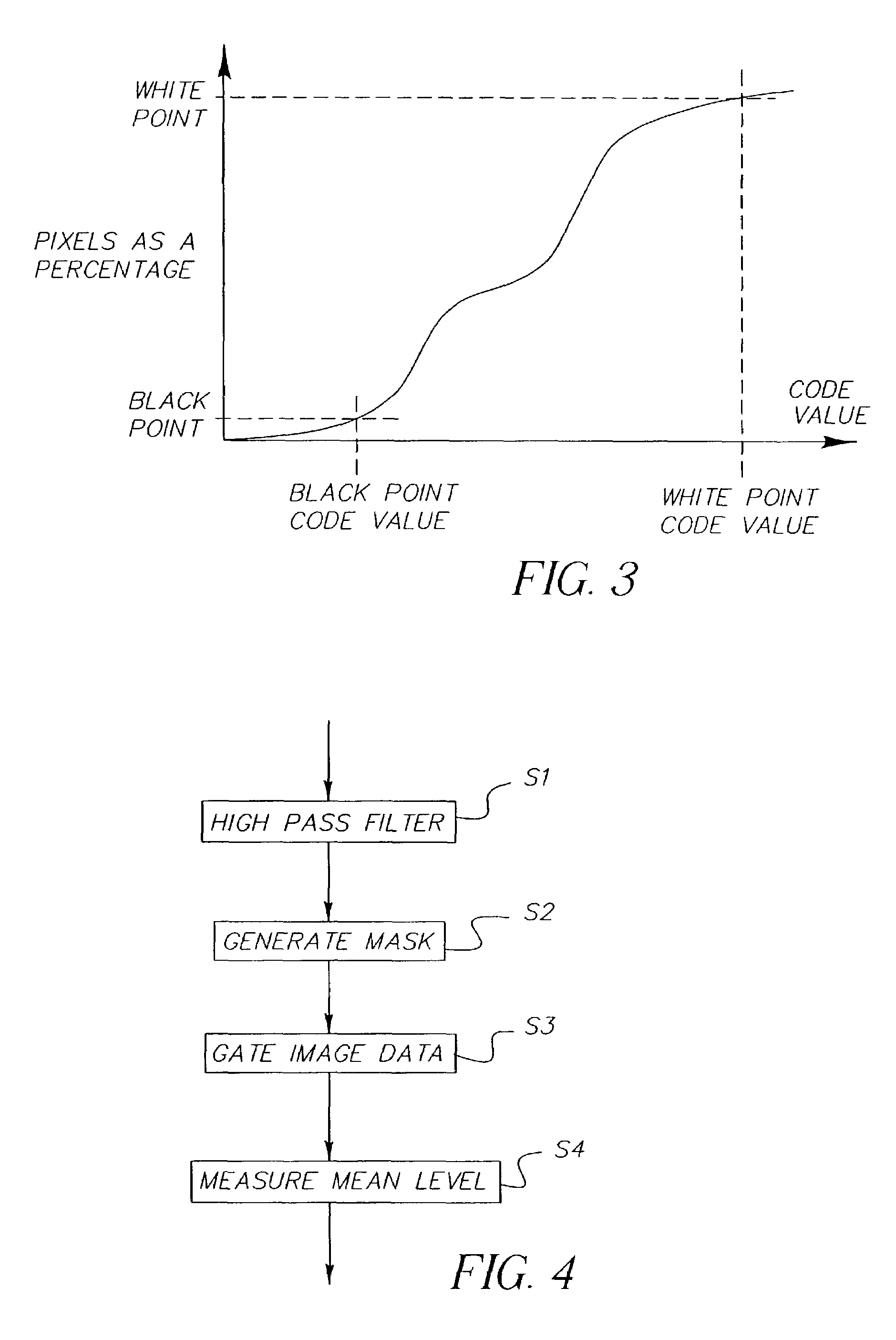Tone scale adjustment
a digital image and tone scale technology, applied in the field of digital input image processing, can solve the problems of removing meta-data or rendering it useless, and cannot take into account the tone characteristics of digital images that have been through several adjustment stages
- Summary
- Abstract
- Description
- Claims
- Application Information
AI Technical Summary
Problems solved by technology
Method used
Image
Examples
Embodiment Construction
[0017]The method of the invention is in three stages, as illustrated in FIG. 2. The first stage, step SX, adjusts the gain and offset of image data, if necessary, to occupy the full data range of the printer. The second stage, step SY, adjusts the shadow and highlight slopes of the image data, if necessary, so that they fall within the appropriate part of the printer characteristic or the appropriate part of the processing space. The third stage, step SZ, uses the mean and median levels of the image data to calculate a gamma and moves the mean level toward that expected for the printer or processing space. Each of these steps will be described in more detail below.
[0018]As explained above, the first stage of the invention adjusts the gain and offset image data to occupy the full data range of the printer. In the case of an sRGB 8 bit printer the input data range is 0 to 255, as shown in FIG. 1. FIG. 1 shows that below a code value of 20 very little increase in the print density is a...
PUM
 Login to View More
Login to View More Abstract
Description
Claims
Application Information
 Login to View More
Login to View More - R&D
- Intellectual Property
- Life Sciences
- Materials
- Tech Scout
- Unparalleled Data Quality
- Higher Quality Content
- 60% Fewer Hallucinations
Browse by: Latest US Patents, China's latest patents, Technical Efficacy Thesaurus, Application Domain, Technology Topic, Popular Technical Reports.
© 2025 PatSnap. All rights reserved.Legal|Privacy policy|Modern Slavery Act Transparency Statement|Sitemap|About US| Contact US: help@patsnap.com



